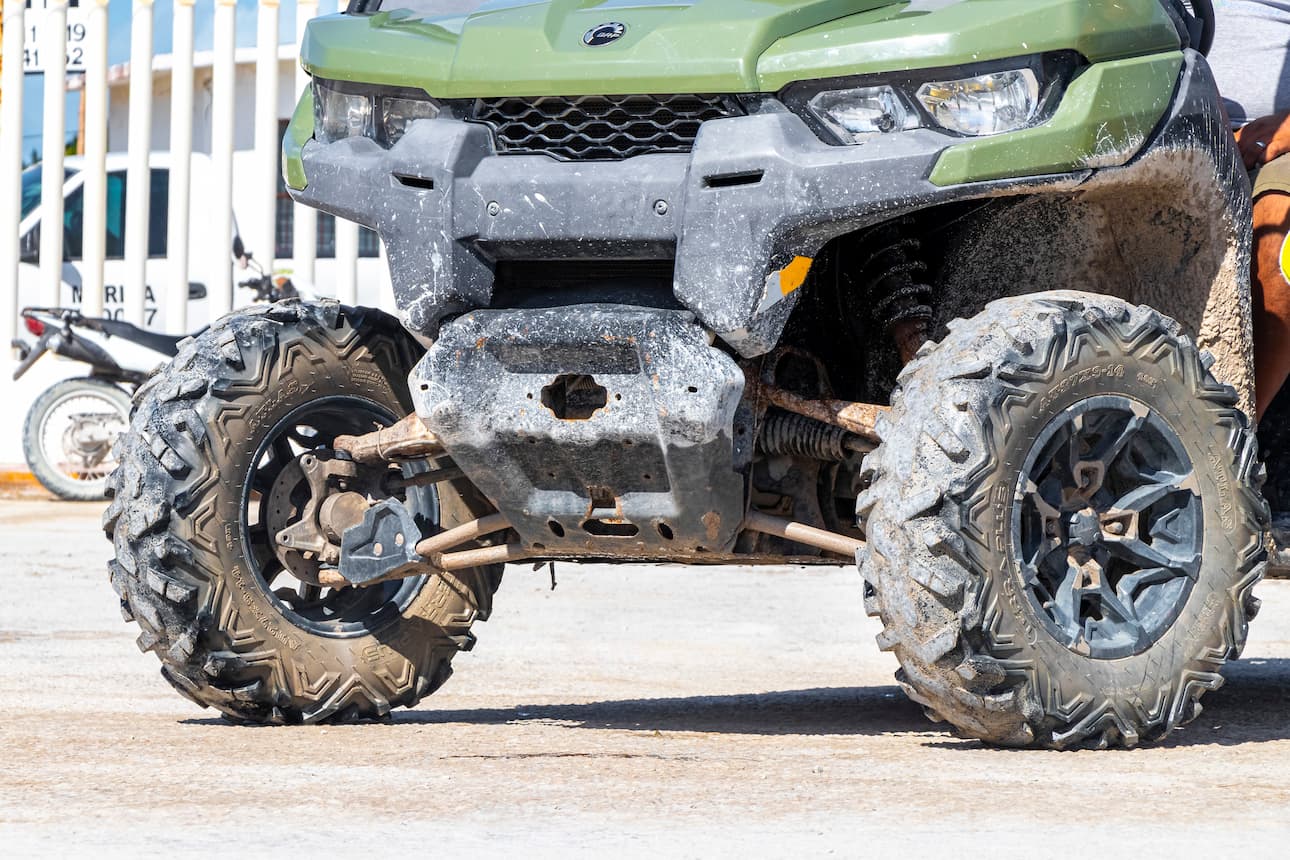When you’re out on the trail or cruising after dusk, dependable headlights and taillights can be the difference between a safe ride and a risky one. UTV lighting problems cause frustration and downtime, and they can also present a legal liability if your lighting system isn’t up to par. In this post, we’ll show you how to diagnose and resolve these critical concerns.

Recognizing Common Indicators: Understanding the Basics of UTV Lighting Issues
Knowing the telltale signs of UTV lighting issues is the first step to addressing them effectively. Whether you’re dealing with flickering headlights or unresponsive taillights, it’s essential to spot symptoms early to prevent more extensive damage or a potential accident. If you’re looking for more information on UTV lighting problems repair, Side by Side Fury has you covered with repair, maintenance, and custom builds.
- Dimming or Flickering Lights: If your headlights or taillights suddenly become dim or flicker sporadically, it might indicate a power supply issue. This could stem from loose connections, corroded wiring, or a failing battery. Watch for gradual changes in brightness or intermittent blackouts that could leave you vulnerable on nighttime rides.
- Complete Light Failure: When your headlights or taillights go completely dark, you know you’ve got a serious issue. This failure can arise from burnt bulbs, blown fuses, or even water damage. Before rushing to replace any components, verify all connections and fuses to avoid unnecessary part swaps.
- Inconsistent Brake Light Activation: Your brake lights should illuminate as soon as you press the pedal. If they’re delayed or only sometimes activate, you could be dealing with either a faulty brake switch or sporadic wiring issues. Ignoring this problem can lead to rear-end collisions, especially in low-visibility conditions.
Common Causes of UTV Lighting Issues
Understanding why your UTV’s lights might be acting up helps you take targeted action. Below are some frequent culprits behind flickering, dimming, or outright failing lights. For reliable UTV lighting problems accessories, you can explore Side by Side Fury’s wide range of parts.
- Burnt-Out Bulbs or LEDs – Over time, bulbs can burn out or LEDs can fail due to normal wear and tear. Excessive vibration and rough trails only accelerate this process.
- Corroded or Loose Wiring – Moisture, mud, and general exposure to the elements cause corrosion. Loose wiring connections can create intermittent power flow, leading to flickering or complete failure.
- Faulty Switches or Relays – Headlight or taillight switches may degrade internally. Similarly, a failing relay can disrupt the electrical circuit and cause lights to act erratically.
- Damaged Fuses – A blown fuse is one of the easiest issues to fix. Fuses can blow when there is an overload or a short circuit, so double-check the fuse box before delving deeper.
Basic Troubleshooting Steps for UTV Lighting Problems
Once you recognize the symptoms and potential causes, it’s time to take action. The steps below can help UTV owners perform initial checks and correct many problems without professional intervention. For more detailed how-tos and UTV lighting problems guides, check out Side by Side Fury’s blog articles.
- Inspect All Bulbs and Fuses – Start by turning on your lights and observing which bulbs fail to light up. Remove and inspect each fuse to see if any appear blown or damaged. Replace them as necessary.
- Check Wiring Connections – Trace each wire and look for signs of corrosion, fraying, or loose connectors. Clean corroded terminals and reattach any loose wiring to ensure a stable connection.
- Test Switches and Relays – Use a multimeter to test continuity on the switches that control your lights. If you suspect a faulty relay, swap it with a relay of the same rating to confirm whether it’s causing the issue.
- Examine the Battery and Charging System – A weak or failing battery can impact the entire lighting system. Verify that your battery has an adequate charge, and ensure the charging system is functioning properly.
Preventing Ongoing UTV Lighting Issues
Keeping your lighting system in top shape not only saves you from hassles on the trail but also helps you comply with local regulations. Below are a few proactive measures you can take:
- Regularly Inspect and Clean: After every ride, do a quick visual check. Remove mud and debris that can accelerate corrosion on wiring and bulbs.
- Invest in Quality Parts: Lower-quality components often fail sooner. Opt for high-grade bulbs, wiring harnesses, and reliable fixtures to extend the lifespan of your lighting system.
- Seal Connections Properly: Use waterproof connectors and heat-shrink tubing wherever possible to protect wiring from moisture and dirt.
When to Seek Professional Help or Choose the Right Parts
There are situations where professional expertise can save you time and money. If your lights continue to malfunction after replacing basic components or you’re uncertain about complex wiring tasks, consider getting UTV lighting problems mechanic assistance from Side by Side Fury. They offer comprehensive repair, maintenance, and even side-by-side custom builds.
Disclaimer: This information is for general guidance. Always consult your UTV’s manual and a qualified mechanic for specific issues or detailed instructions.
Main Points to Remember
- Safety & Legality: Properly functioning headlights and taillights are essential for visibility and compliance with local laws.
- Early Detection: Dimming or flickering lights often point to wiring or power supply problems.
- Common Culprits: Issues like burnt bulbs, blown fuses, or corroded wires are typically behind lighting failures.
- Simple Checks: Inspect bulbs, fuses, and wiring connections before assuming a major problem.
- Professional Backup: If initial troubleshooting fails or you’re unsure, seek professional help to avoid further complications.
By addressing UTV lighting issues promptly and following these preventive steps, owners can maintain optimal performance and safety on every ride. Whether you’re a weekend warrior or a serious off-roader, well-maintained lighting ensures you’re seen—and that you see everything the path ahead has to offer.
